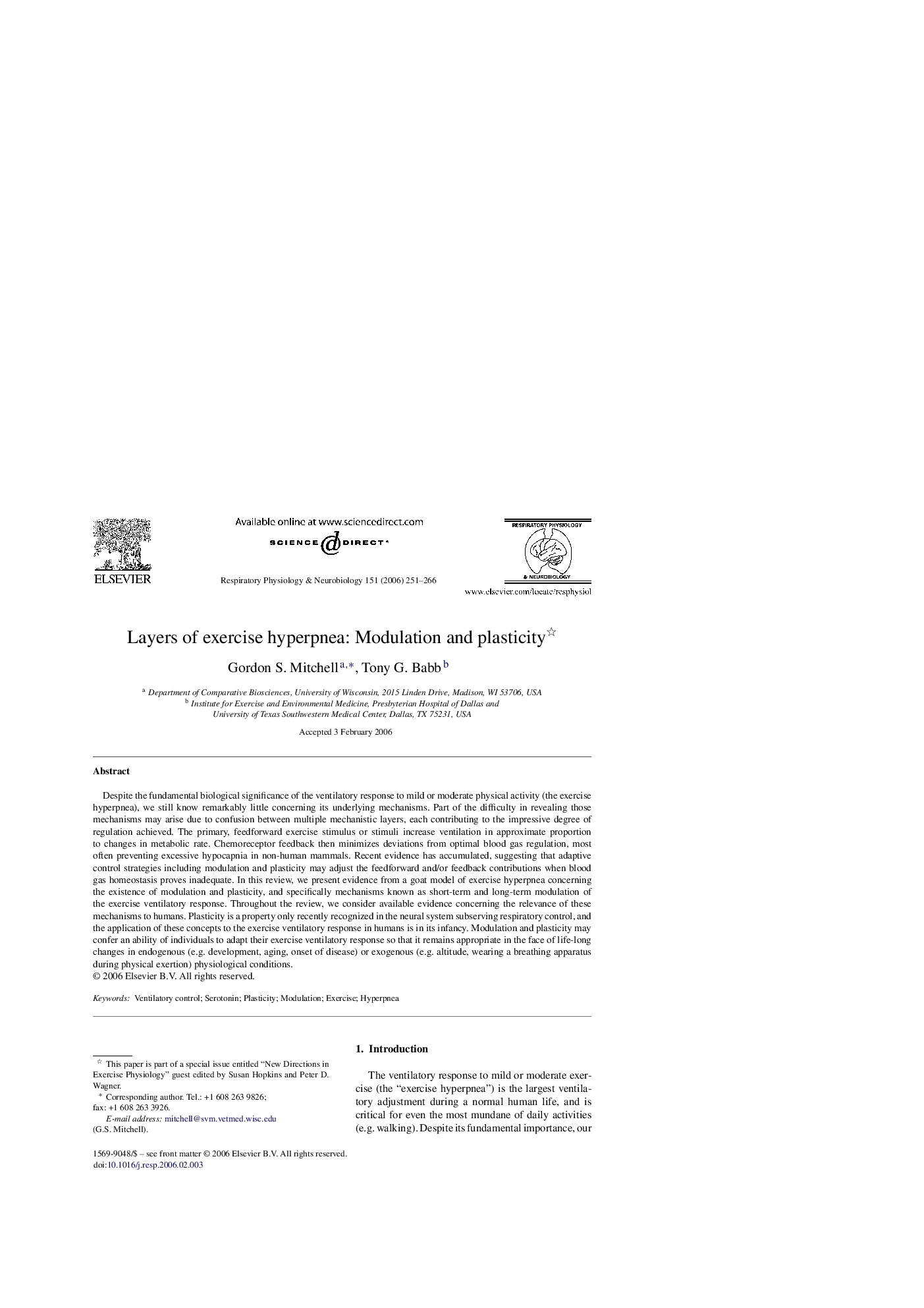| Article ID | Journal | Published Year | Pages | File Type |
|---|---|---|---|---|
| 2848530 | Respiratory Physiology & Neurobiology | 2006 | 16 Pages |
Despite the fundamental biological significance of the ventilatory response to mild or moderate physical activity (the exercise hyperpnea), we still know remarkably little concerning its underlying mechanisms. Part of the difficulty in revealing those mechanisms may arise due to confusion between multiple mechanistic layers, each contributing to the impressive degree of regulation achieved. The primary, feedforward exercise stimulus or stimuli increase ventilation in approximate proportion to changes in metabolic rate. Chemoreceptor feedback then minimizes deviations from optimal blood gas regulation, most often preventing excessive hypocapnia in non-human mammals. Recent evidence has accumulated, suggesting that adaptive control strategies including modulation and plasticity may adjust the feedforward and/or feedback contributions when blood gas homeostasis proves inadequate. In this review, we present evidence from a goat model of exercise hyperpnea concerning the existence of modulation and plasticity, and specifically mechanisms known as short-term and long-term modulation of the exercise ventilatory response. Throughout the review, we consider available evidence concerning the relevance of these mechanisms to humans. Plasticity is a property only recently recognized in the neural system subserving respiratory control, and the application of these concepts to the exercise ventilatory response in humans is in its infancy. Modulation and plasticity may confer an ability of individuals to adapt their exercise ventilatory response so that it remains appropriate in the face of life-long changes in endogenous (e.g. development, aging, onset of disease) or exogenous (e.g. altitude, wearing a breathing apparatus during physical exertion) physiological conditions.
